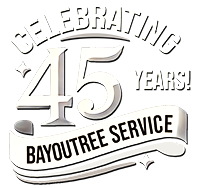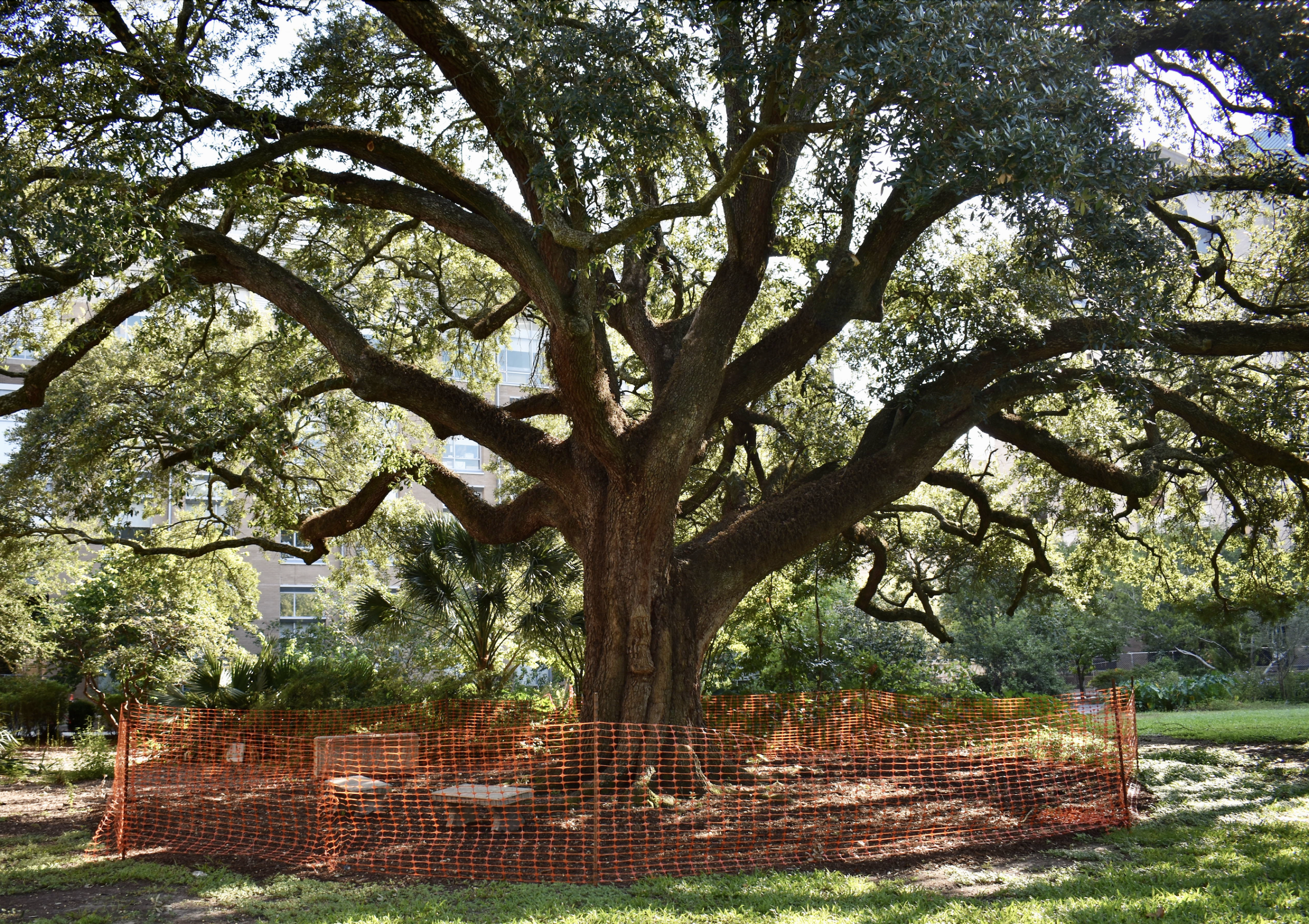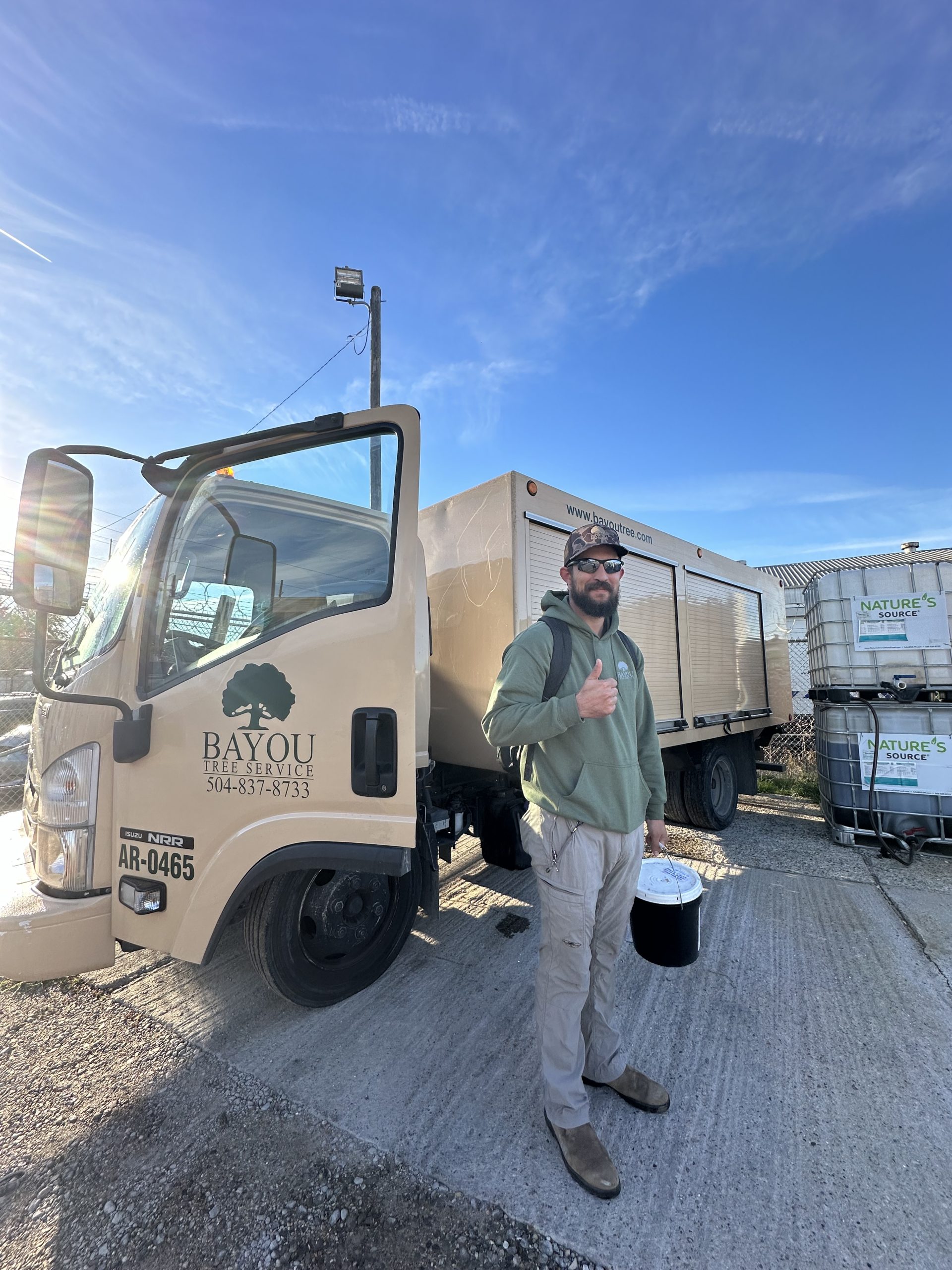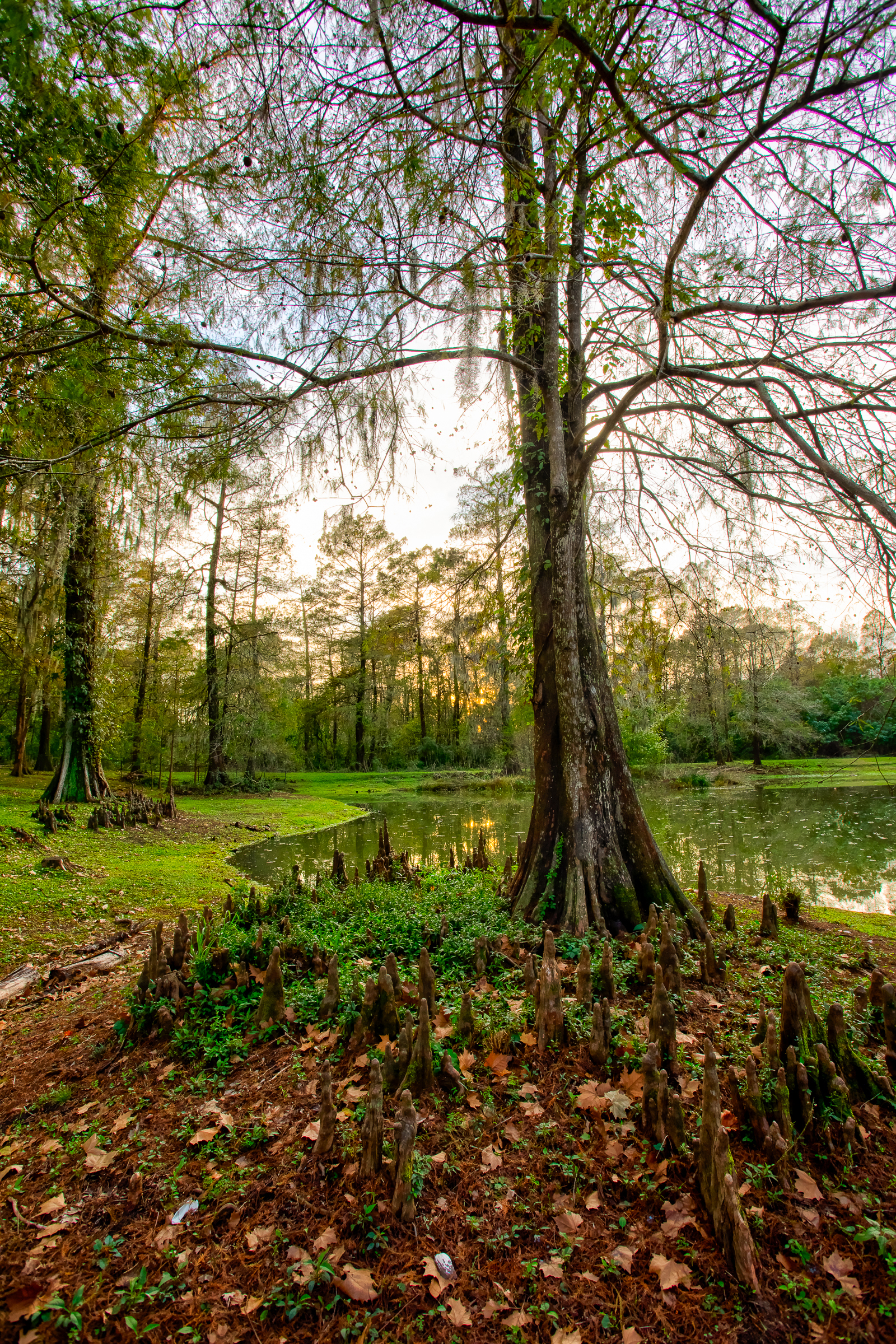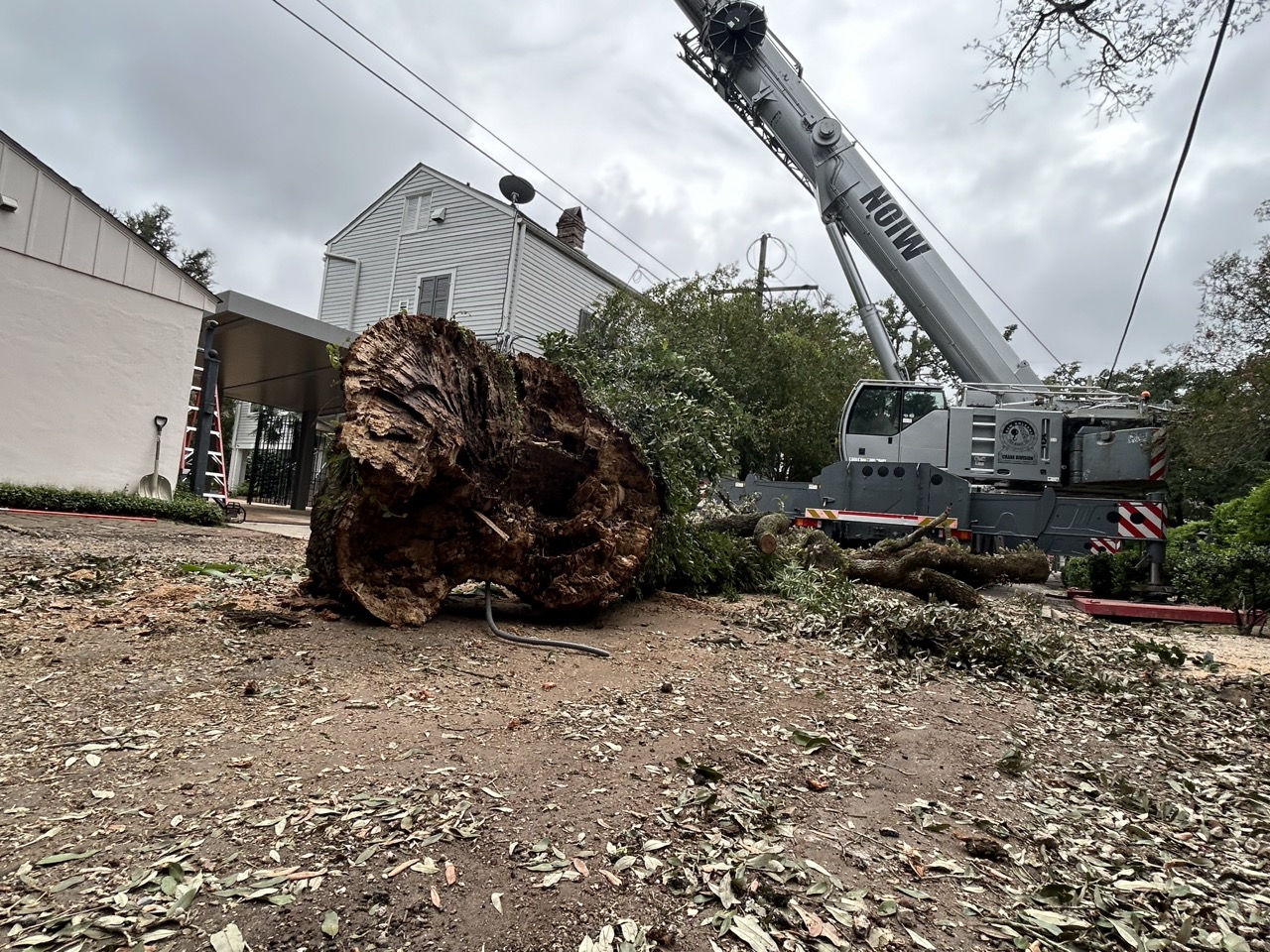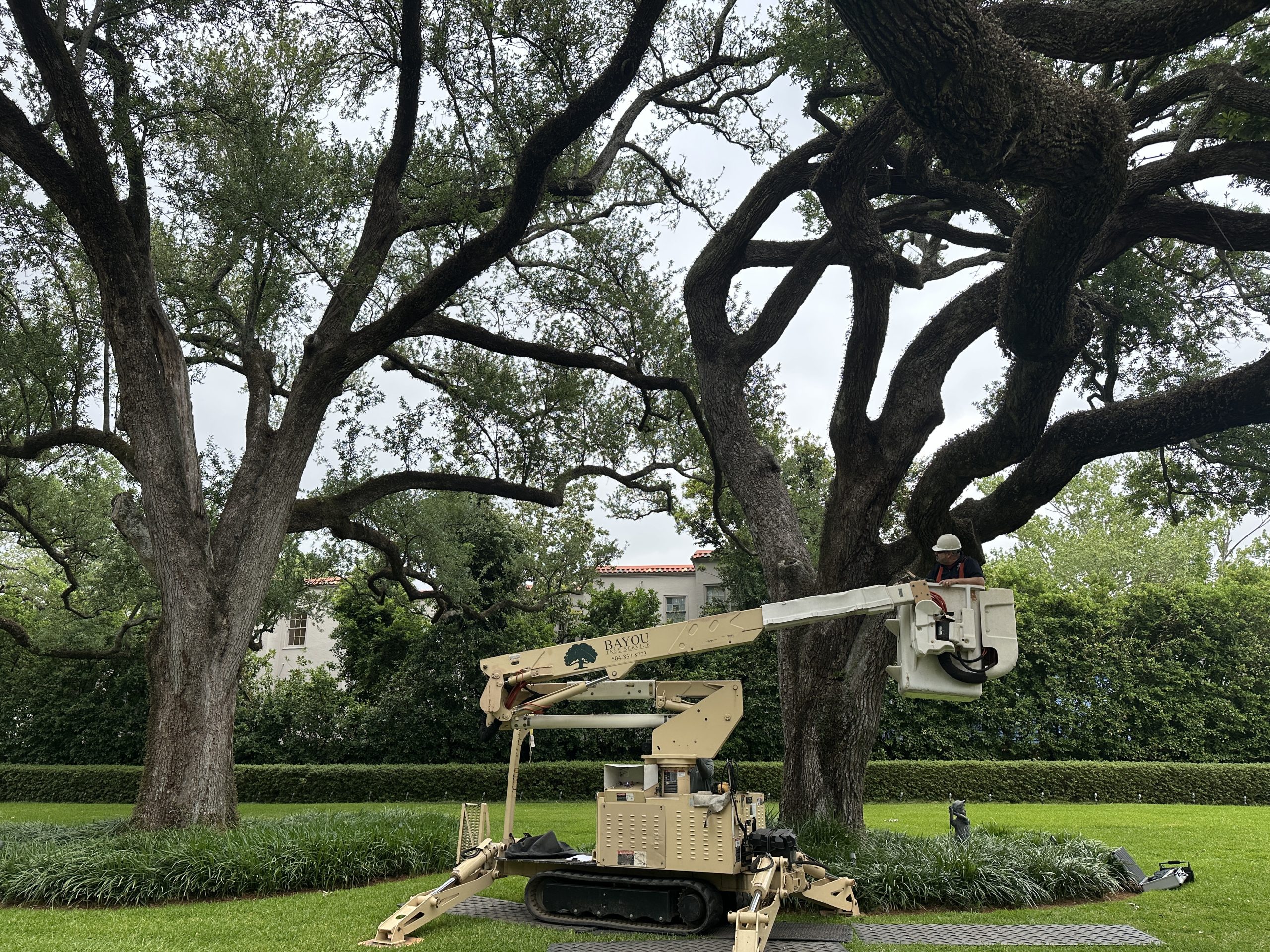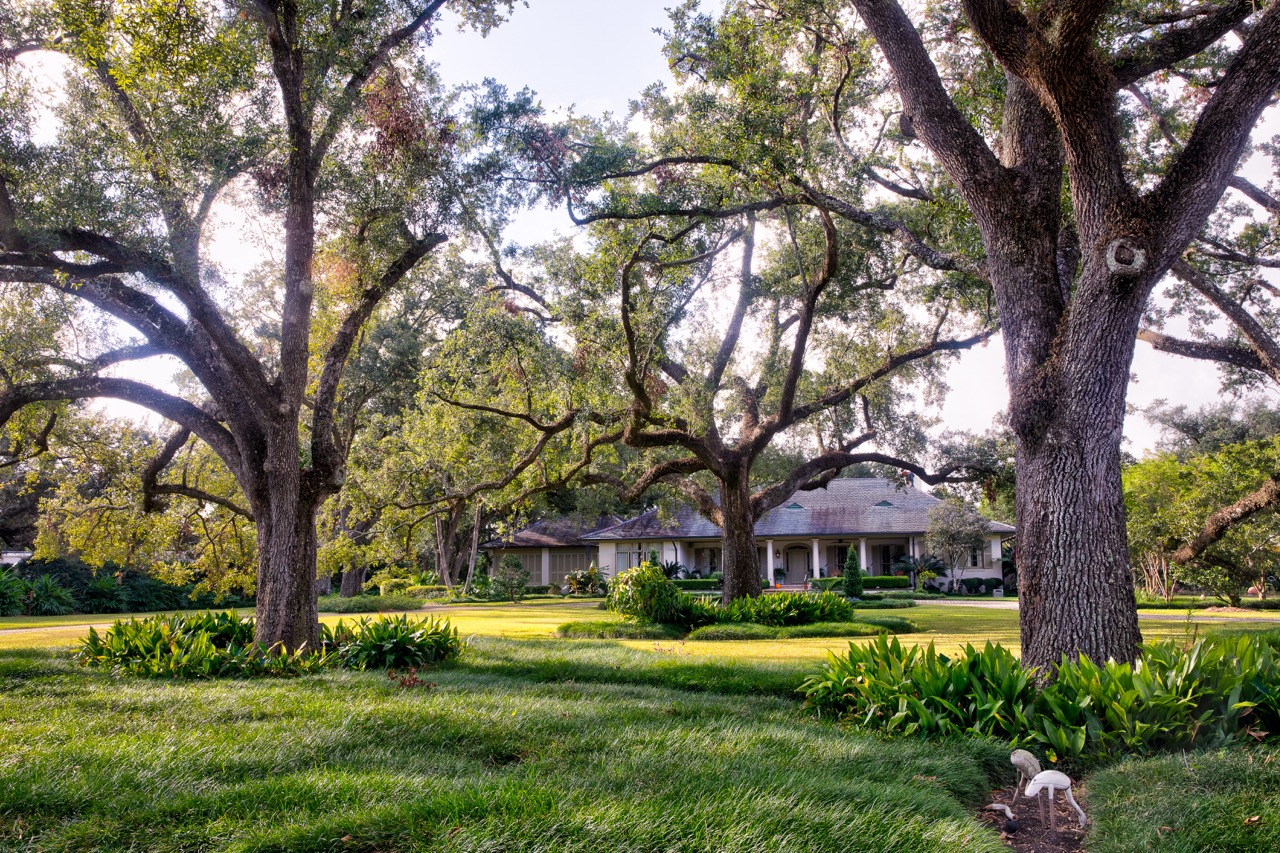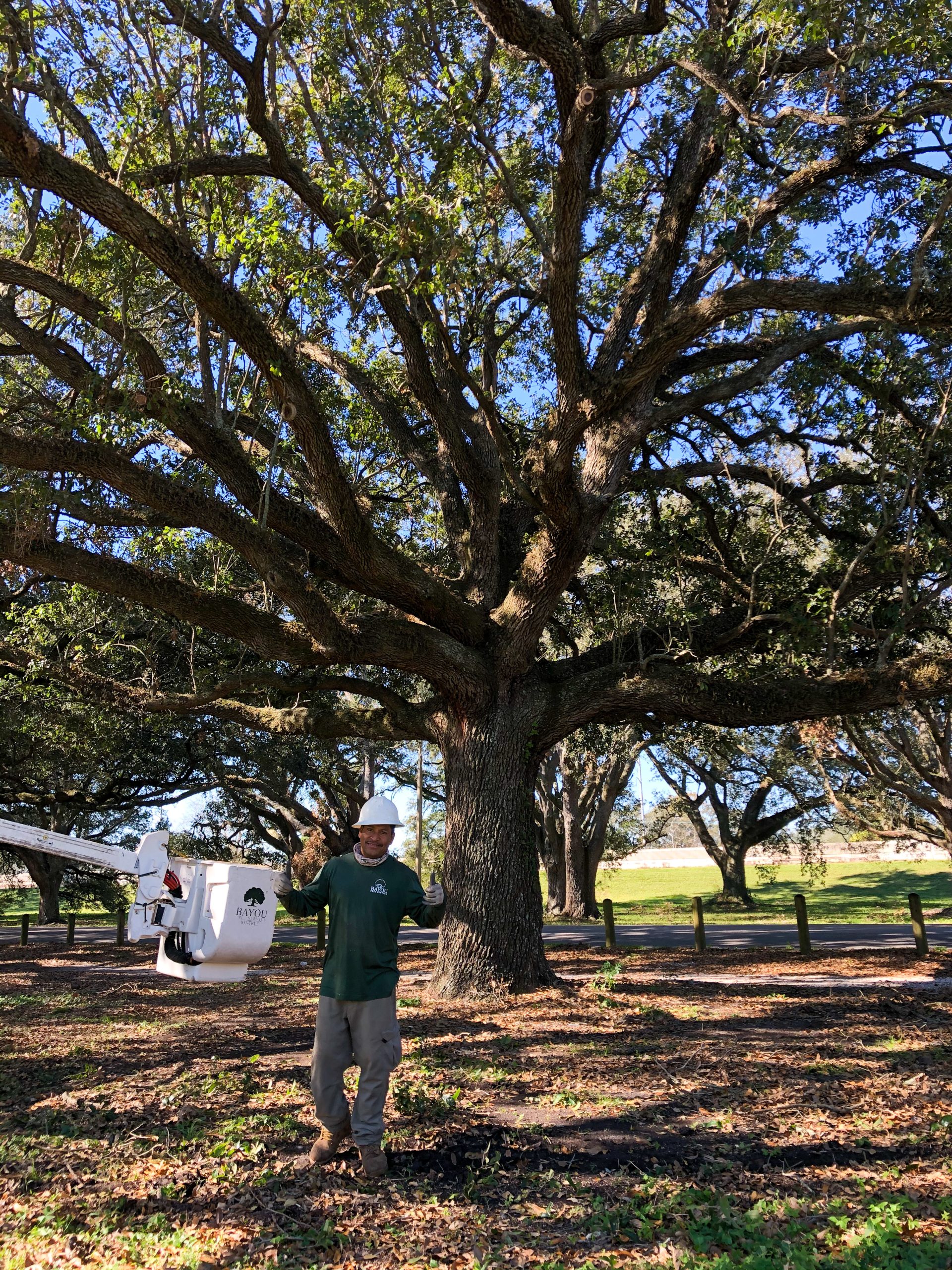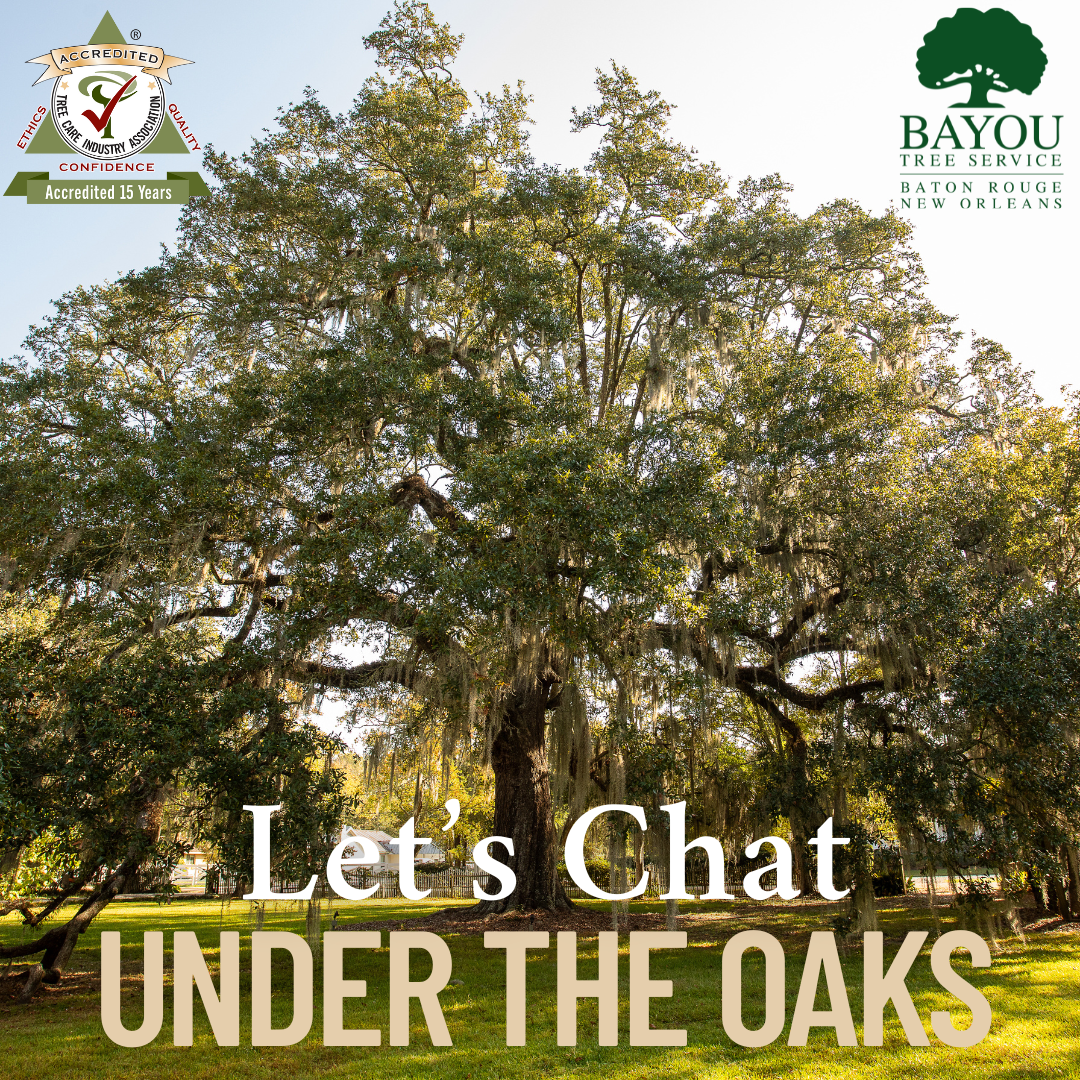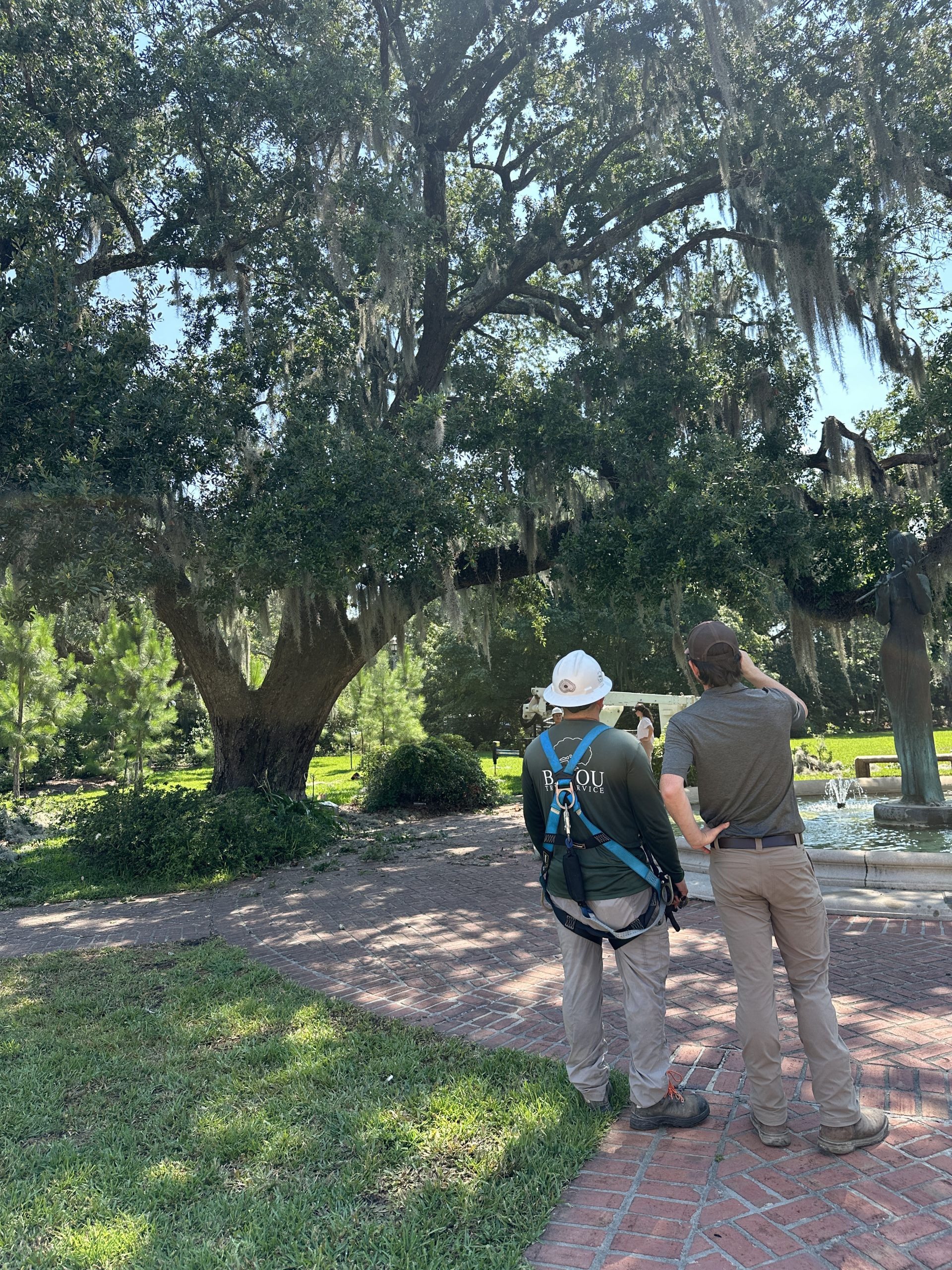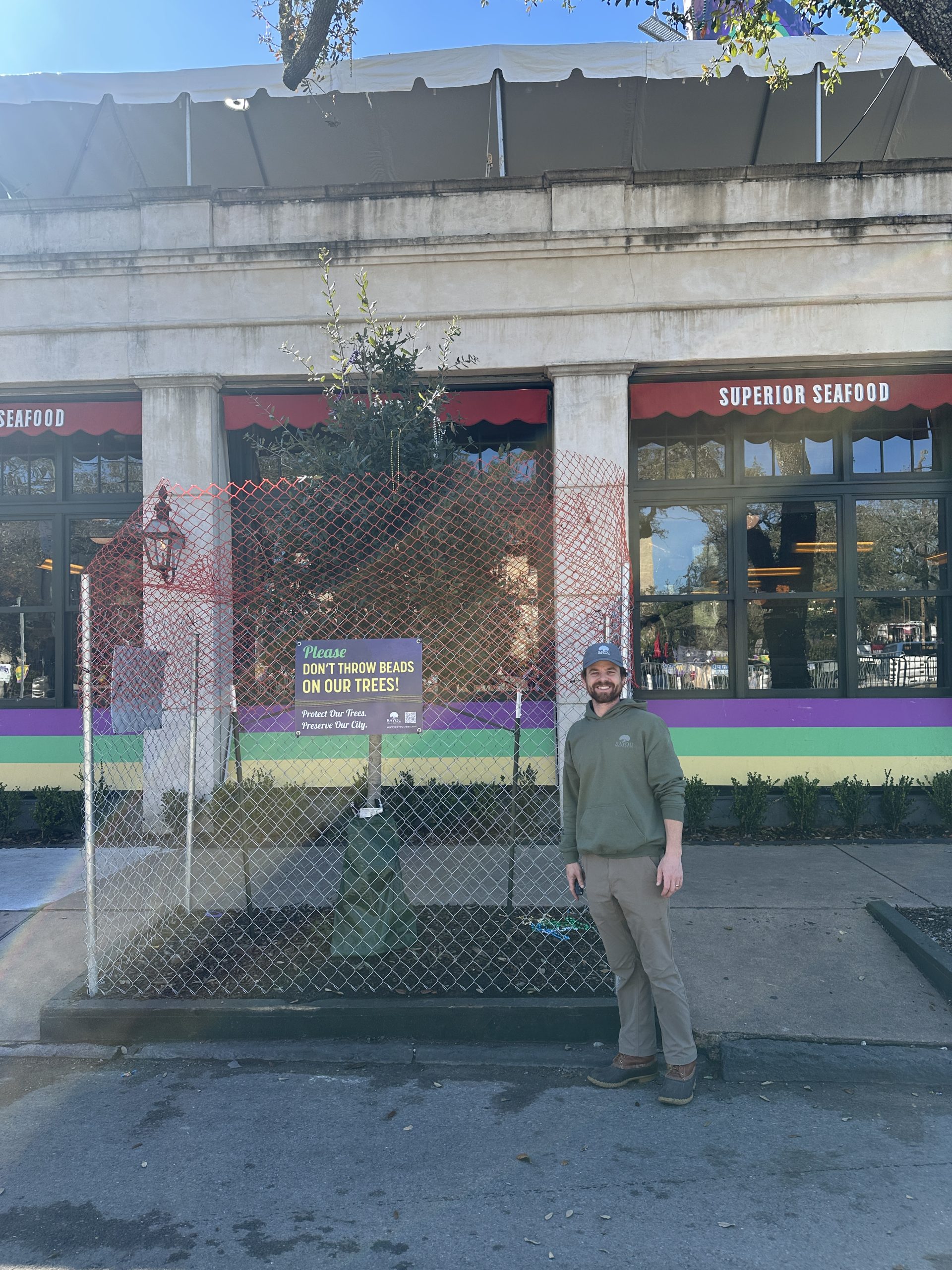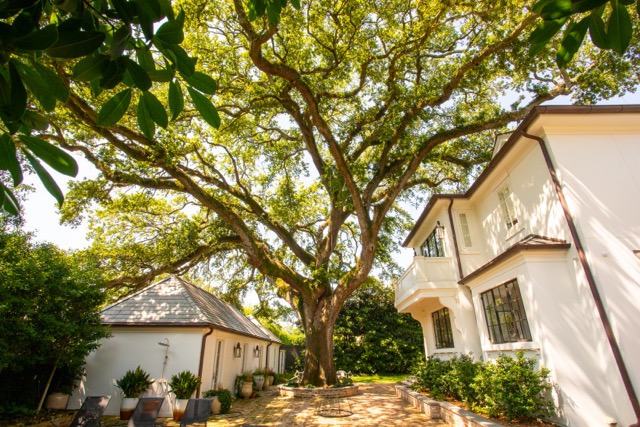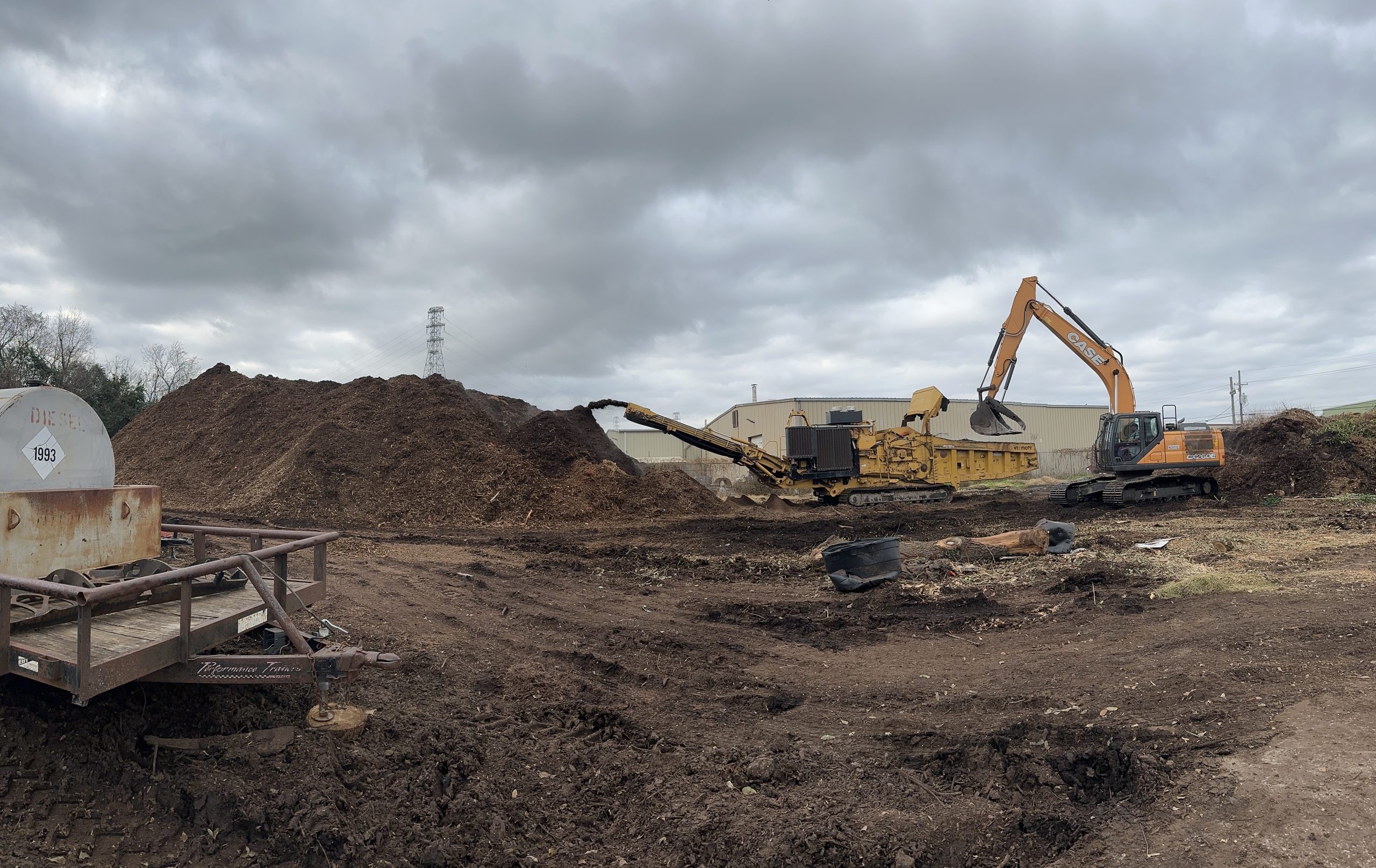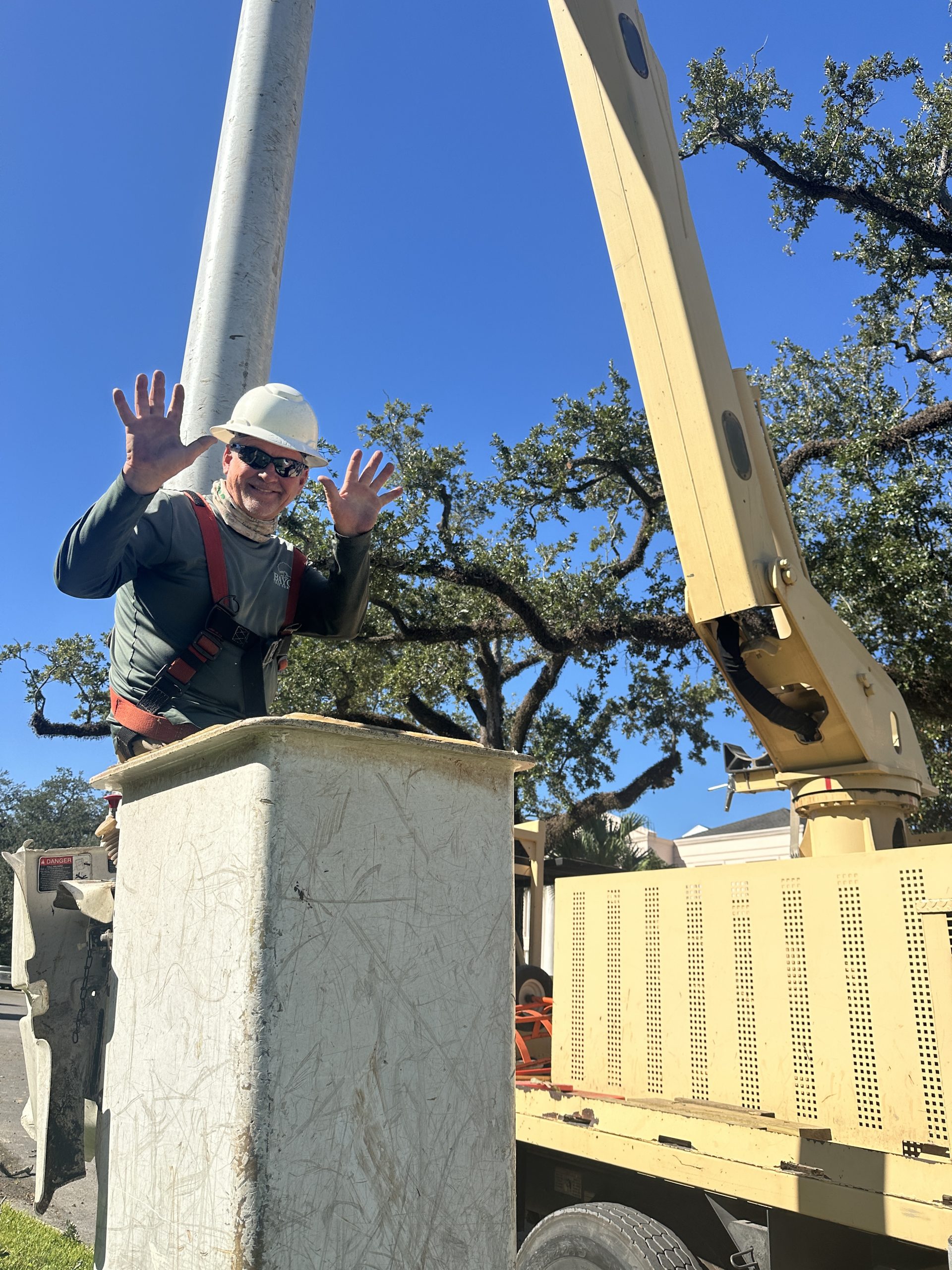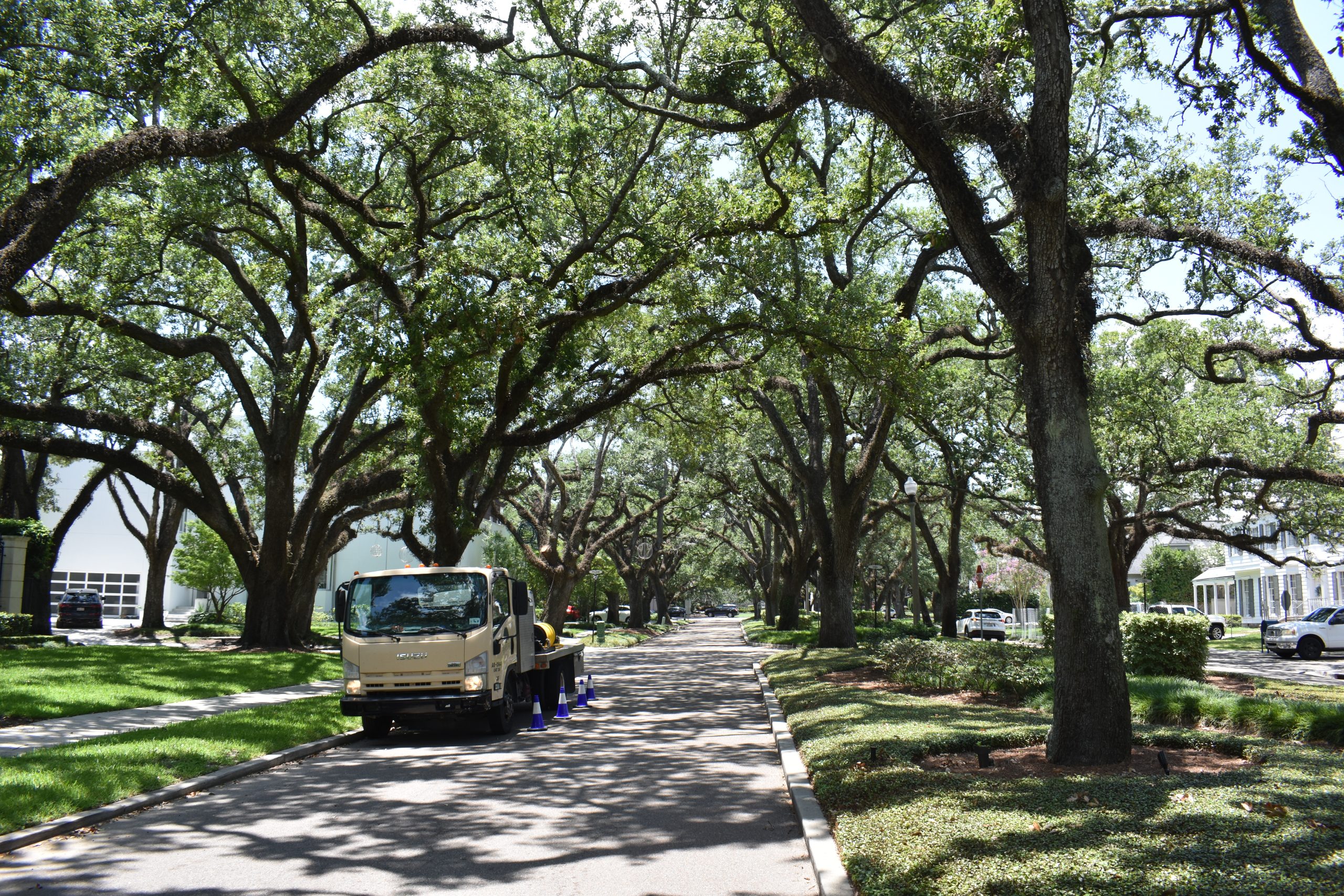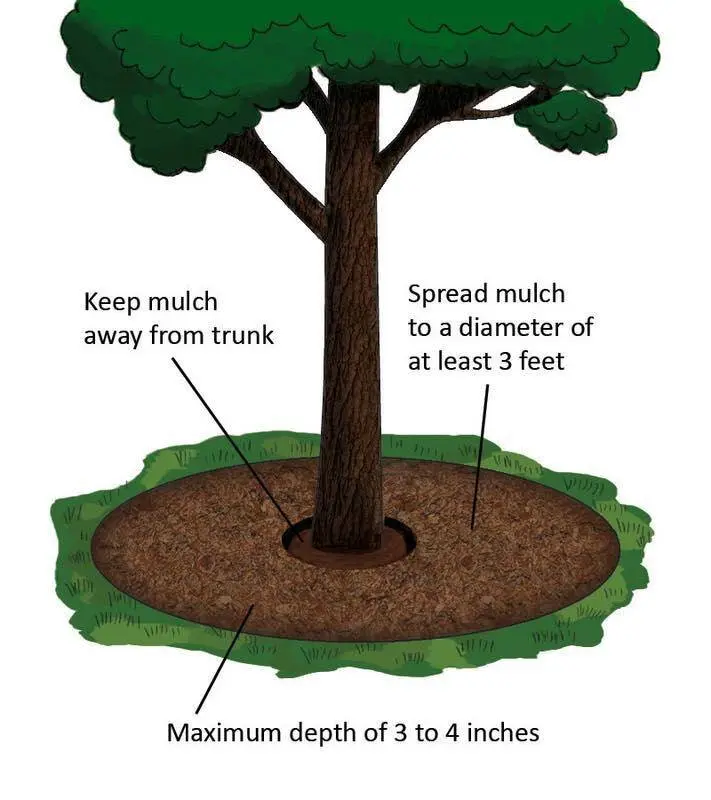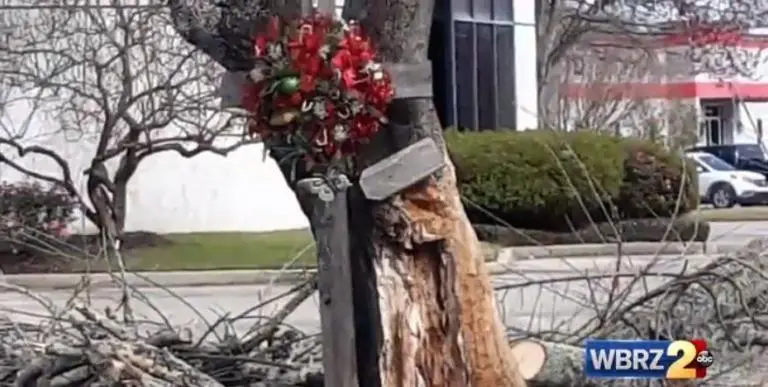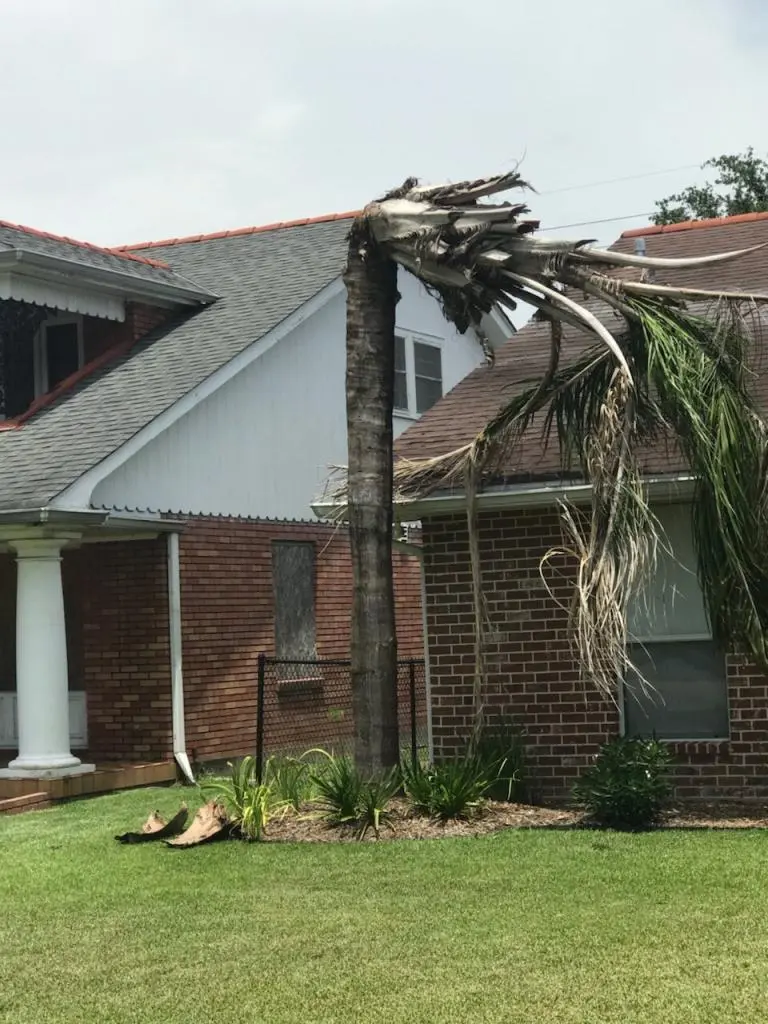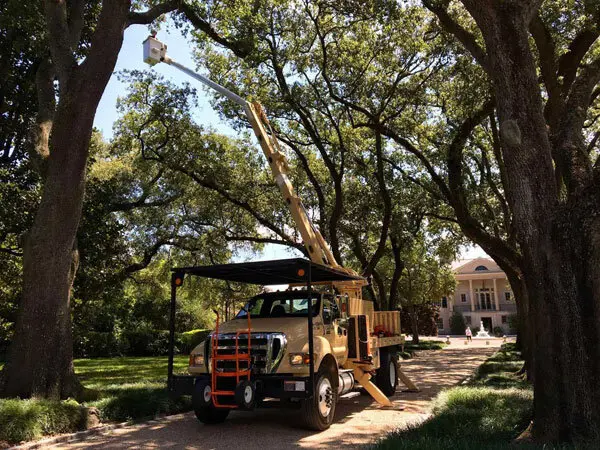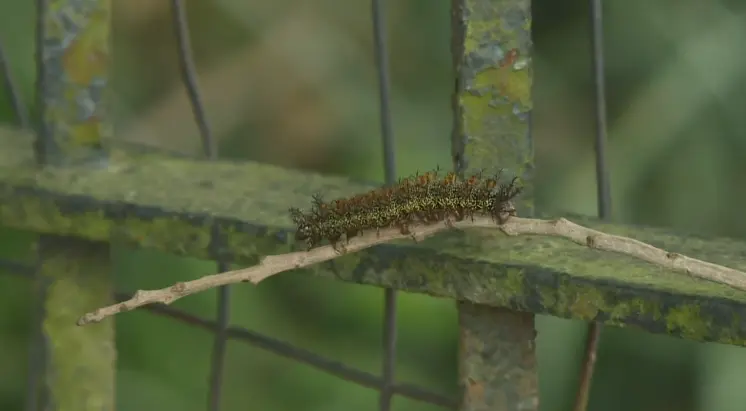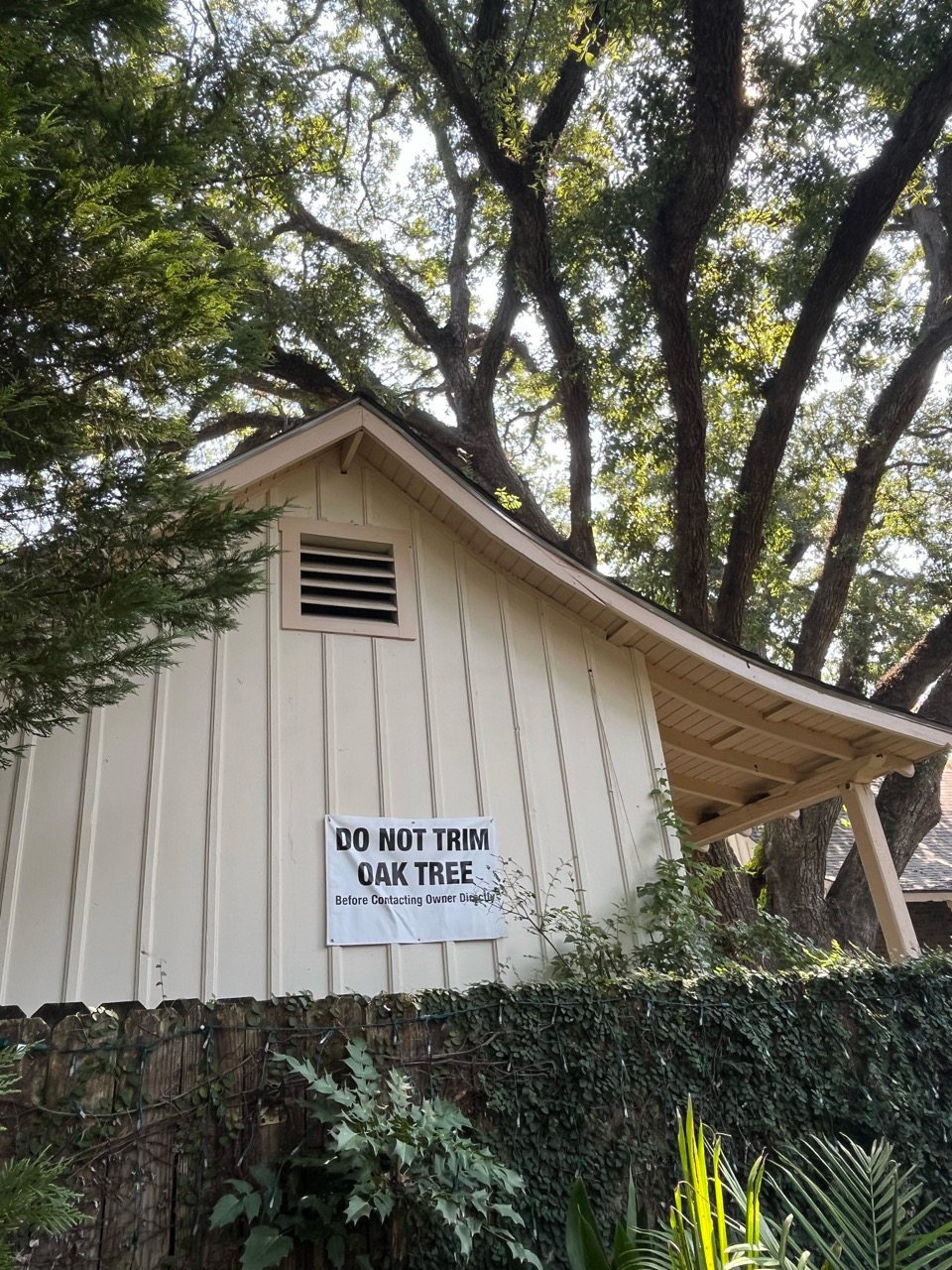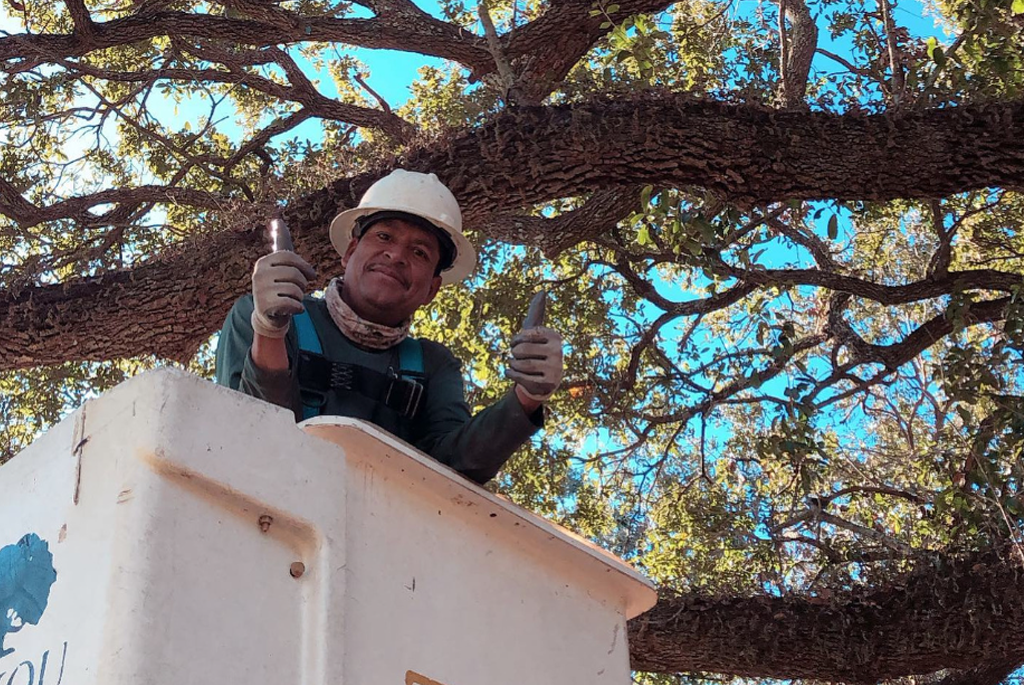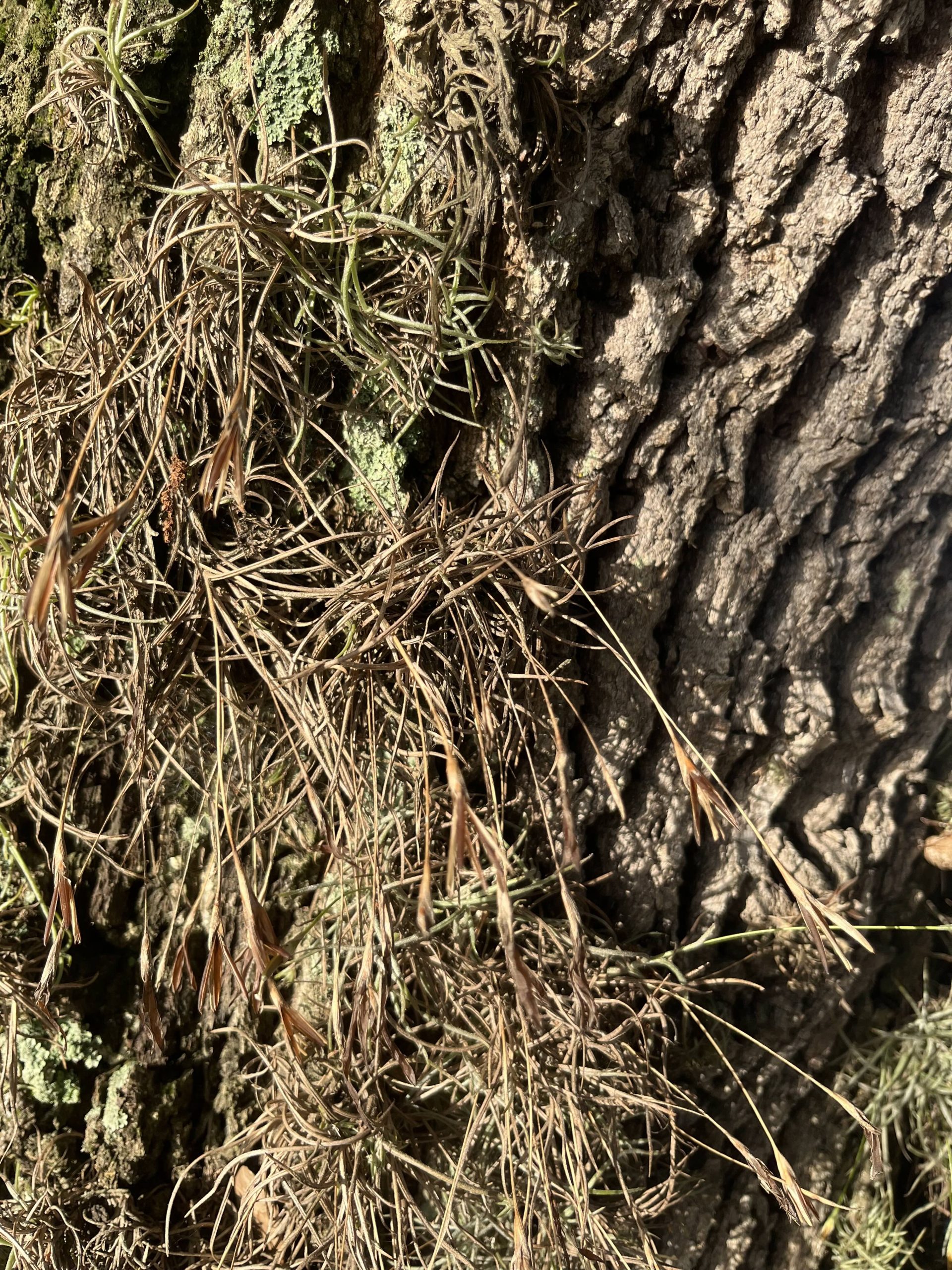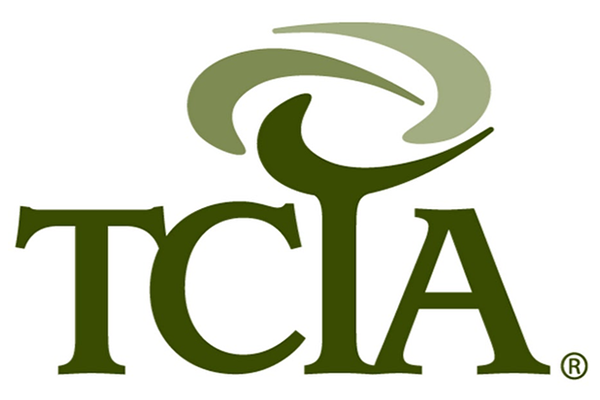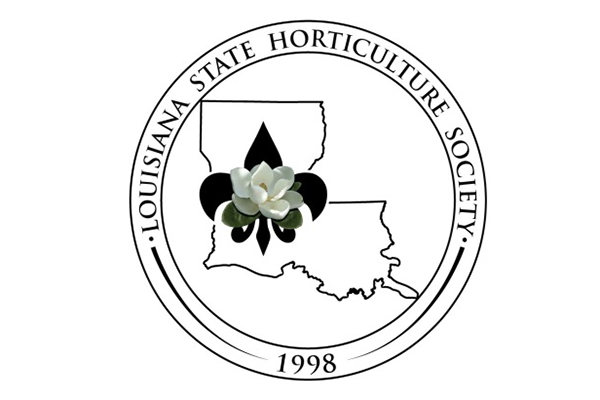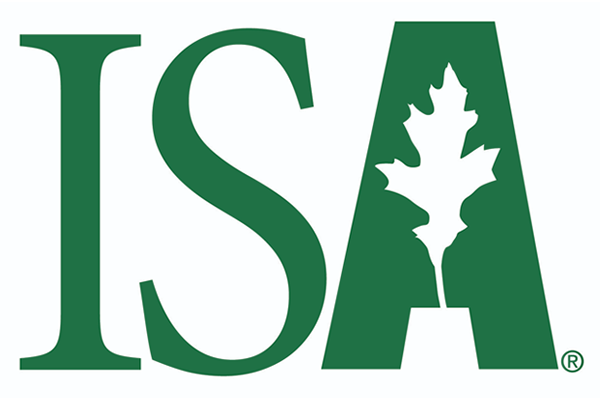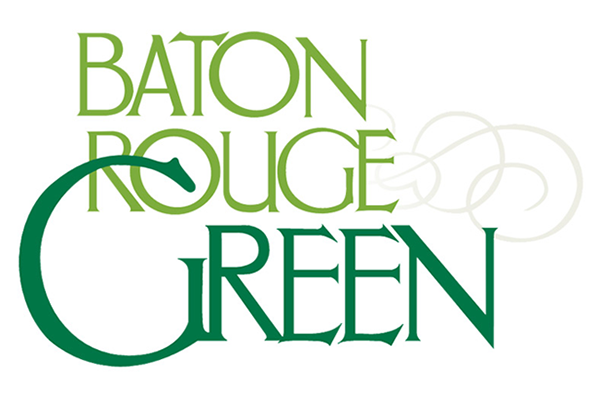Healthy Trees, Happy Homes: Why Arborists Belong in Your Renovation Plans
Planning an Outdoor Renovation? Don’t Overlook Your Trees. Whether you’re [...]
Not All Tree Care Is Created Equal—Ours Is Rooted in Science and Experience
At Bayou Tree Service, tree care isn’t one-size-fits-all. Our liquid [...]
Shade, Please! Why We’re Thanking Our Trees This Summer
In this Louisiana heat, shade isn’t luxury—it’s essential. Thankfully, our [...]
Pruning for Hurricane Season: What to Look Out For Before Storms Roll In
When hurricane season ramps up, strong trees are your first [...]
Why Your Live Oak Isn’t as Self-Sufficient as You Think
Live oaks are iconic symbols of strength and beauty across [...]
Live Oak Landscaping: 5 Plants that Thrive Underneath
Live oaks are more than just trees—they’re living landmarks. Their [...]
Help Your Trees Thrive All Spring Long
Your guide to spring tree care, fertilization, and pruning—especially for [...]
Let’s Chat Under the Oaks: Round Up’s New Formula & It’s Potential Impact
What You Need to Know About Roundup’s New Formula and [...]
What Does a Bayou Tree Service Arborist Do, Anyways?
For 45 years, Bayou Tree Service has been the trusted [...]
Please Don’t Throw Me Something, Mister!
Mardi Gras is a time for celebration, [...]
Why Tree Health Matters: 5 Reasons to Invest in Care
Trees are one of the most valuable assets in any [...]
The Importance of Mulching: Protecting Roots & Enhancing Growth
Mulching is more than just an aesthetic touch for your [...]
5 Reasons to Take Advantage of Winter Tree Care
Winter may seem like the time to take a break [...]
Did Snow Damage My Trees? Signs to Watch For & When to Call an Arborist
Snow in Louisiana may be rare, but when it happens, [...]
Winter Tree Care: Why Trees Need Attention in Cold Months
Winter tree care is often overlooked, but it's one [...]
Caring for Crepe Myrtles in Baton Rouge and New Orleans
Crepe myrtles with their stunning summer blooms and iconic silhouettes, bring [...]
Mulching to Protect Baton Rouge Trees from Freeze Damage
Believe it or not, temperatures do actually drop below 32℉ [...]
When our team found a special tree on a job site, they knew we had to do something about it.
Trees are near and dear to our hearts. We understand [...]
Summer of 2018: Louisiana’s palm trees still dying off after freezes
Last spring, we watched as palm trees around Baton Rouge and New [...]
Comprehensive Live Oak Care by Certified Arborists in Louisiana
Live oak trees are a special symbol of Louisiana's beauty, [...]
Beware of stinging caterpillars this Spring
Springtime in New Orleans means the return of the [...]
Preserve and Maintain Your Urban Trees with Expert Care
Urban trees are essential to our environment, offering beauty, shade, [...]
Whose Tree Is It Anyway?
Navigating the Wild World of Boundary Trees When it comes [...]
Ball Moss Alert: Protecting Baton Rouge’s Trees
At Bayou Tree Service, we are always on the lookout [...]
